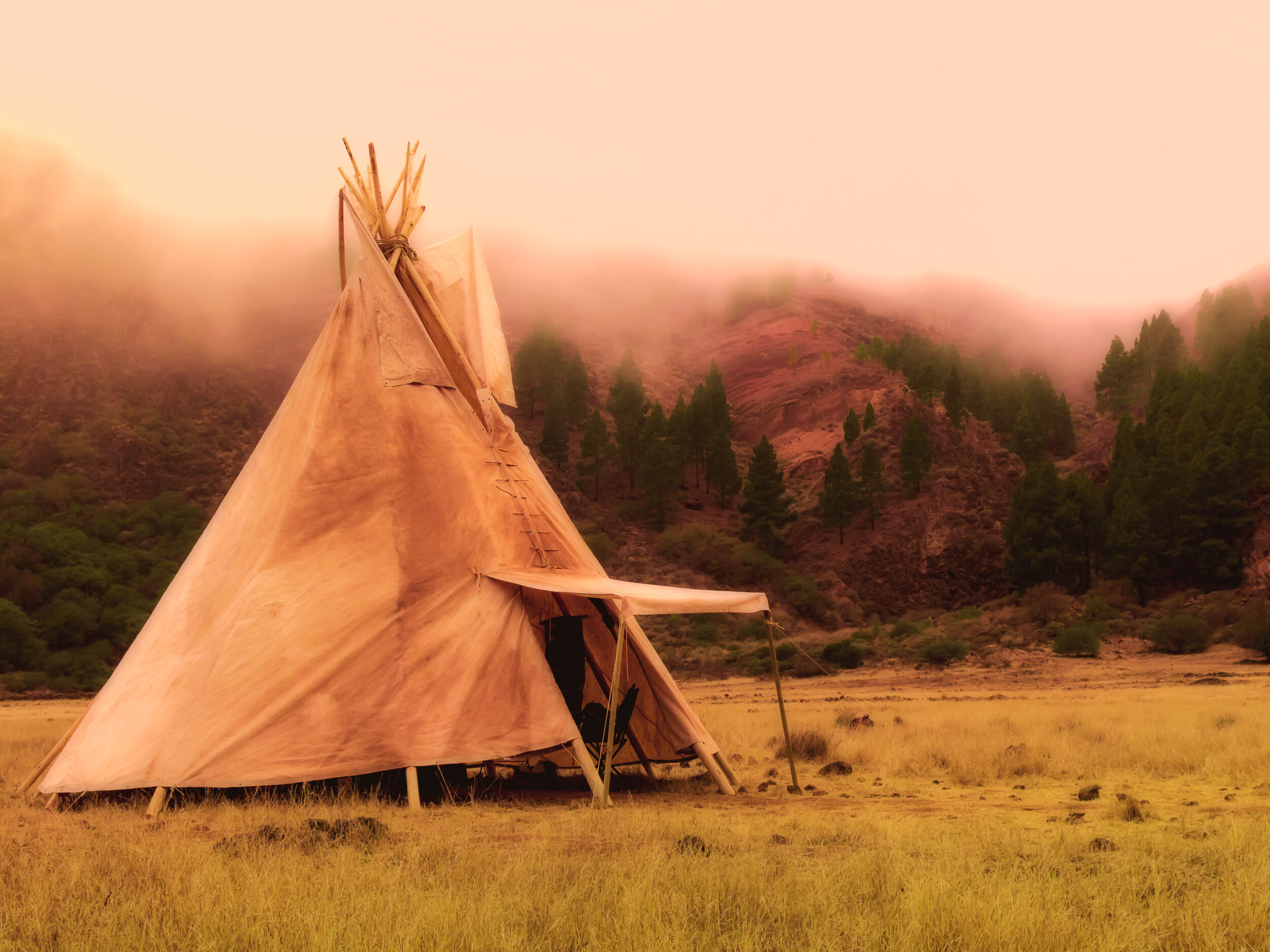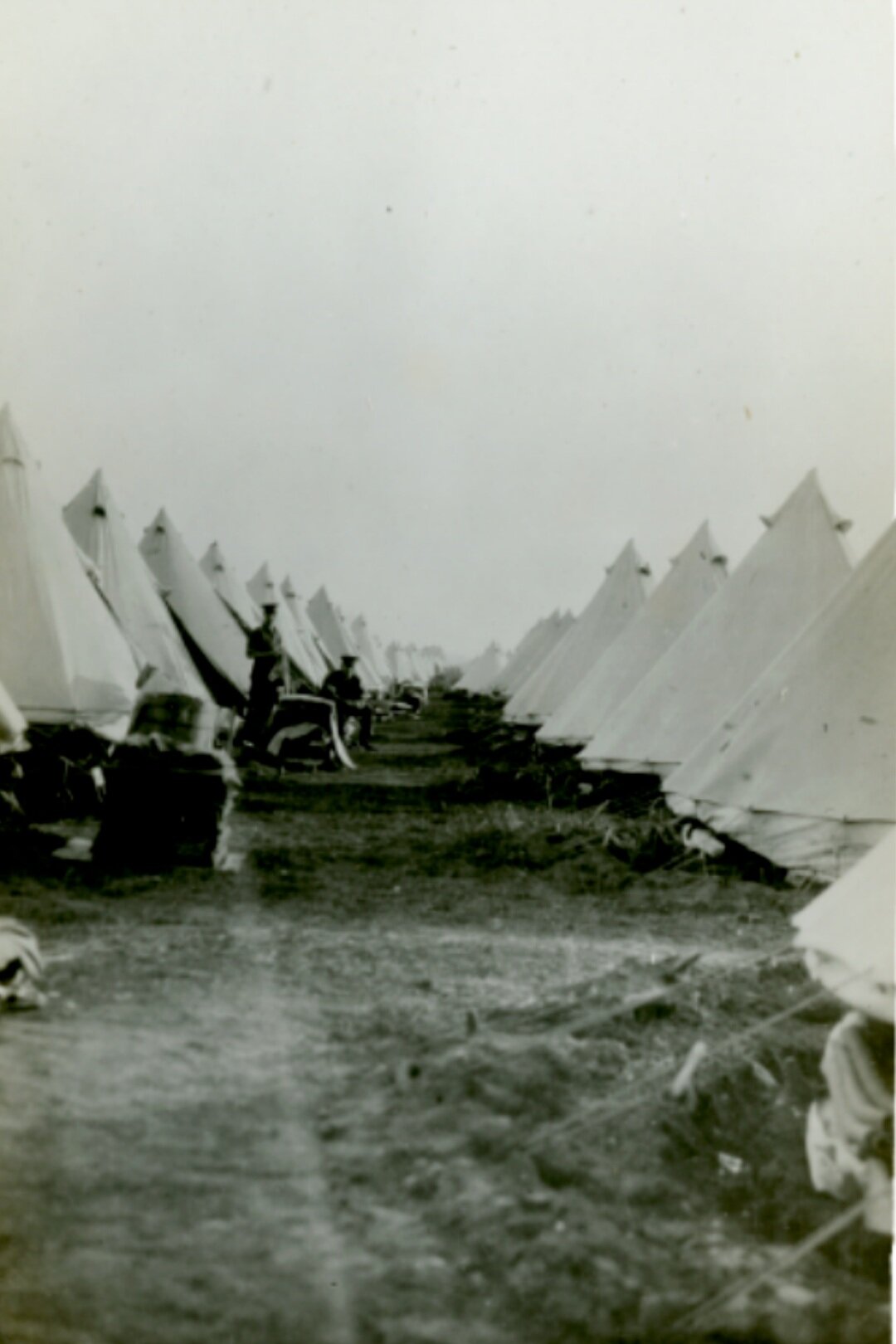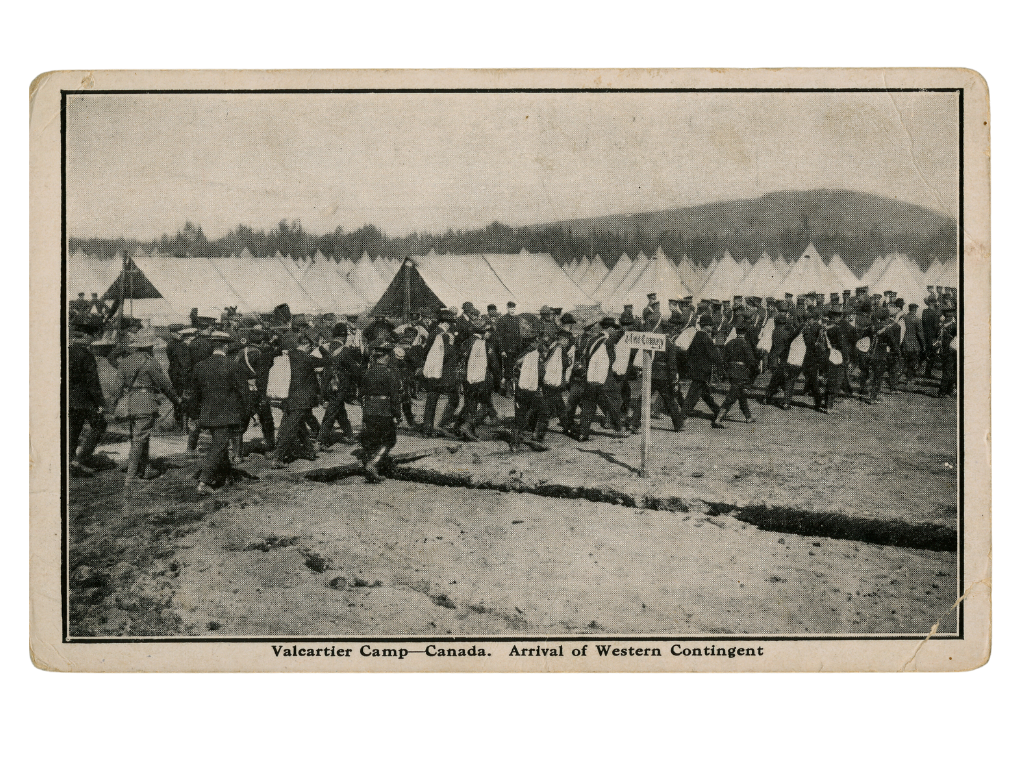The use of canvas tents dates as far back as the 9th century.
While there are some records of conical-style tents around 600 AD during the reign of Emperor Maurice and throughout the Byzantine Army, the first documented use of canvas bell tents only appears many centuries later.
What were their purpose at that time? We can’t be sure.
[Source: The Old Timey]
The narrative around the origin and evolution of canvas bell tents is based on personal accounts drawn from journals and biographies, paintings that provide clues to older civilizations, and in rare circumstances, vintage photographs.
The function of the tents varied, from providing temporary shelter for nomadic lifestyles to base camps for military use. The design of these tents have been adapted throughout the years by different cultures across the globe.
Canvas Tent Use During the Fur Trade in Canada: Late 1700s and Early 1800s
Before fur trade posts were developed, temporary shelters were needed during the annual voyage to trap beavers to keep up with the European demand for felt hats. The North West Company and Hudson’s Bay company set up camps along the way, somewhere between Lake Superior and Hudson Bay.
The most popular style of tent? The Native American tipi. The Northwest Journal cites another similar-style tent based on an anthology of sketches and stories, some of which by Alexander Henry the Younger and Red River immigrant Peter Rindisbacher. These accounts describe what we know today as a “wedge tent”. The wedge tent is best depicted as an a-framed tent made of leather or canvas, supported by a ridge pole. This style of tent is also believed to have been used by Selkirk settlers and Loyalist civilians alike.

The Sibley Tent in Texas and the Bell Tent in Britain: Mid 1800s
Taking inspiration from the tipi, with its conical shape ideal for repelling moisture and gusty winds, a fellow named Henry Hopkins Sibley (a Federal Army Colonel at the time) developed the Sibley Tent while posted in Texas.
At first glance, the Sibley Tent was not all that different from the tipi. However, it boasted better portability, ventilation (for the fire pits and stoves), and ease of set up and take down, which is why Hopkins later patented it in 1856. Somewhere along the line (when exactly, we are not sure), short side walls were incorporated into the design, transforming it into what we know today as the bell tent.
Unbeknownst to Sibley, though, the British Cavalry was already deploying the bell tent during the Crimean War. [Source: CanvasCamp]
The First Confirmed Canvas Bell Tent Use in Canada: Early 1900s
There are many accounts of canvas bell tents being used during conflict within North America and Europe in the 19th and 20th century. After digging through the Canadian archives, we found what appears to be the first confirmed use of bell tents in Canada.

This photo was taken in 1914 at the Valcartier training base (Quebec), where bell tents lined the camp to accommodate the first Canadian contingent.
The photo below shows the arrival of the Western contingent, with what appears to be a mix of both canvas wall tents and bell tents in the background. The Valcartier training base eventually held over 35,000 troops.

[Source: Canadian War Museum]
Canvas Bell Tents in Canada Today
Not all historical reviews of bunking up in canvas tents were positive. Explorers and soldiers lamented about the lack of ventilation and cumbersome structure when relocating the tents.
Maintaining the classical features of the bell tent, CanvasCamp evolved the design of the tents to maximize its functionality and versatility into what is now dubbed the “Sibley Bell Tent.”

